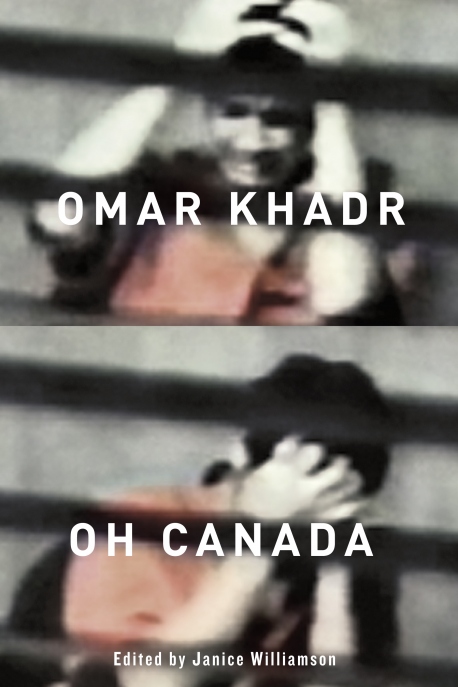If timing is everything, can it also be ironic?
Just as author and academic Janice Williamson launches an anthology of essays detailing Canada’s failure to uphold the rights of one of its citizens, another “Oh Canada” is quickly garnering much attention.
Canadian media have already publicized the Massachusetts Museum of Contemporary Art’s new exhibition which aims to portray Canada’s artistic landscape, as seen through the eyes of its contemporary artists, authors, and cultural purveyors.
But an altogether different legacy is on show in Ms. Williamson’s tome, as interpreted by an equally eclectic set including legal jurists, human rights activists, journalists, filmmakers, poets and playwrights. Each of the prominent contributors here illustrate the slow decay of Canada’s democratic ideals, tied up as they have been to America’s constitutionally bankrupt detention of Canadian Omar Khadr (the Supreme Court of Canada’s sentiments, not mine).
Which narrative will attract the most attention? No one can deny that the “Khadr effect” has made Khadr’s tale unpalatable for many Canadians.
“For years, as though exiled, Omar Khadr disappeared below the radar of what matters,” writes Professor Williamson in the introduction. “Why?”
Referencing Philosopher Simone Weil, she argues that people have a tendency to look away from those who need help. Her hope is that the anthology “reminds us of our responsibility to not look away.”
Indeed Canadians have looked away for too long from the emotionally challenging story of a child who “was dealt a sentence through his family name,” as activist Craig Kielburger notes in the book. “It’s unfair for any kids to have to live up to their parents,” he writes, reflecting on his brief encounter with Omar years ago in Pakistan. “It’s especially so when you’re a Khadr.”
And so within the book’s pages, Omar’s story comes out through a variety of literary forms including reflections, speeches, plays and poetry of people who knew him only through released interrogation recordings, newspaper articles, and books, as well as those who knew him personally, including former lawyers Richard J. Wilson and Dennis Edney.
“Omar is distinguished by two crucial factors,” explains Mr. Wilson. “First, his family is highly visible and controversial in Canada. They are not seen as sympathetic by the public and press, and the presumptive prejudice against him and his family plays out strongly in the accusations against and custodial treatment of Omar [. . .]. Second, Omar was a boy of 15, alone and isolated from his family at the time of his capture.”
And from Mr. Edney, his 2010 address to students at King’s University College in Edmonton, Alberta. There he blamed Islamophobia as one of the reasons that citizens in both the US and Canada have acquiesced to government claims that “drastic measures must be taken in the interest of our security,” and have accepted that “our security is such a priority that it means the suspension of civil liberties, a limitation on ethics, and infringement on the rule of law — for the greater good of our society.”
Communications scholar Yasmin Jiwani also points to “guilt by association” as the reason that Canadians did not respond with outrage to the violation of Omar’s Charter rights, as outlined by the Supreme Court of Canada.
The fact that Omar was captured on the battlefield as a teenager is starkly illustrated by Heather Spears’ delicate portraits of Omar at 15 and years later as an adult, still in imprisonment. Poetry by George Elliott Clarke, Rachel Zolf, and Lola Lemire Tostevin illustrate with words the pain and hatred that led this child grow into manhood inside Guantanamo despite international conventions that urge the rehabilitation of child soldiers rather than their indefinite removal from society, and/or forced statelessness.
Indeed, that a child soldier was left to languish in Guantanamo represents a “black mark” on Canada’s “international reputation and standing,” writes Senator Roméo A. Dallaire in an excerpted chapter from his most recent book.
Khadr’s treatment at the hands of the Canadian government, condemned by many of the book’s contributors, including lawyer Robert Diab and academic Alnoor Gova, represents a “lasting shame.” Not only are Omar’s rights neglected, but within the country’s rich mosaic, Canadian Muslims are left to wonder about the value of their own citizenship. “We argue instead that the lingering ambiguity — the uncertainty as to why Canada has committed and then neglected to address a series of similar human rights violations involving Muslims — does violence to our very idea of citizenship, multiculturalism, and liberal democracy,” they write.
Legal documents, including Khadr’s affidavit of 2008, and his plea bargain of 2010, are included and offer a rare opportunity to hear his voice, filtered though it may be through military lawyers. Khadr’s voice was also directly captured in the film You Don’t Like the Truth: 4 Days inside Guantanamo, by Patricio Henriquez and Luc Côté, which features excerpts of Khadr’s interrogation by CSIS agents in 2003. Portions of the screenplay are highlighted in the anthology. Slightly more nuanced, a fictional account of the interrogator’s self-justification in “Nail-Biter: A One-Act Play,” written by award-winning playwright and teacher Judith Thomspon.
As in an artful kaleidoscope, Ms. Williamson has brought together the voices and sentiments of those who refuse to look away from Omar despite his desperate need and the clinging albatross of his family name. Like the art exhibit in Massachusetts, this collection deserves to be widely acknowledged, too, for what it says about Canada, and about all of us.—Amira Elghawaby
Amira Elghawaby is a contributing editor at rabble.ca and an Ottawa-based writer.
This review first appeared in Prism Magazine.



